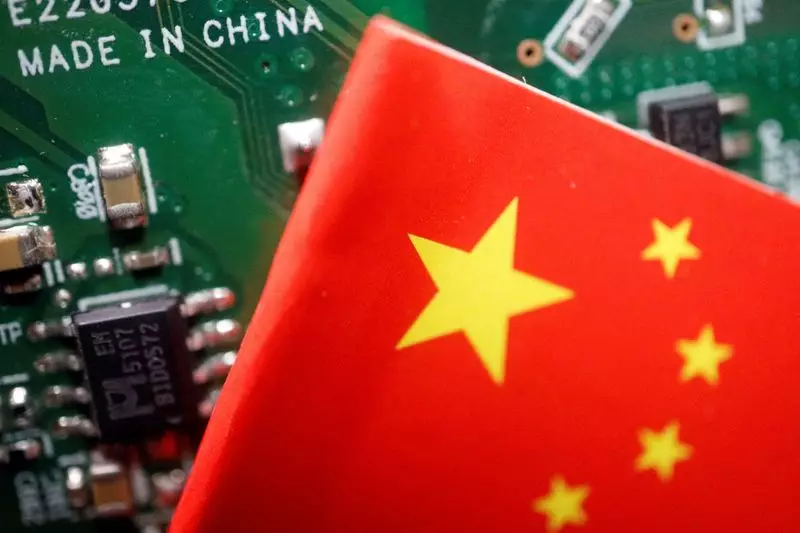The intricate world of semiconductors has recently witnessed another bout of turbulence, particularly for Chinese firms grappling with U.S. export controls aimed at stifling their technological advancements. Despite the lingering fears tied to these measures, many Chinese companies are displaying remarkable resilience. By focusing on supply chain localization and building equipment stockpiles, they are prepared to adapt to the new economic landscape.
The latest round of U.S. restrictions, which marks the third major clampdown over the past three years, targets essential aspects of semiconductor production—namely, equipment, software, and high-bandwidth memory. Approximately 140 Chinese entities now find themselves on the exclusion list, including well-known players such as Naura Technology Group and ACM Research. Organizations like Empyrean, a key player in electronic design automation, have publicly announced their intent to expedite the localization of their processes, suggesting an institutional shift towards self-reliance amid escalating geopolitical tensions.
The statement from Empyrean encapsulates a broader sentiment within the industry: “The company will seize the development opportunity to accelerate the localization process.” This determination reveals a critical adaptive strategy among Chinese firms, who are learning to navigate a landscape that is becoming increasingly hostile to their operations.
In response to the sanctions, many companies have announced substantial stockpiling efforts. Jiangsu Nata Opto-Electronic Material, for instance, confirmed that it had accumulated necessary materials and was exploring domestic alternatives, albeit without specifying the details of their strategies. Other firms, such as Beijing Huafeng Test & Control Technology, proudly state that their supply chains are already localized, showcasing a forward-thinking mindset that minimizes dependence on foreign technology.
Chinese authorities have characterized these U.S. measures as a form of “economic coercion,” yet interestingly, stock prices for chip producers remained largely unaffected, suggesting that market analysts view the fallout as manageable. This muted reaction could indicate a growing confidence in the ability of Chinese firms to adapt and innovate, regardless of external pressures.
Numerous analysts have posited that these new export controls pinpoint a “weak spot” in the Chinese semiconductor infrastructure, which heavily relies on imported tools for manufacturing. According to reports, there is an expectation that capital expenditure by the Chinese semiconductor industry could plummet by around $10 billion—equating to a 30% year-on-year decrease. This projection illustrates the challenging road ahead for manufacturers who must now reconfigure their strategies in response to these restrictions.
Interestingly, the crux of the challenge seems to pivot not only on restraint but on resilience. Analysts have observed a dramatic uptick in purchases of foreign equipment by Chinese firms over the last year, with imports reportedly soaring by a third to reach $24.12 billion. This import surge suggests that while the U.S. aims to throttle Chinese capabilities, the latter’s strategic purchasing is allowing them to circumvent some impacts.
A noteworthy revelation in this latest round of restrictions was the exclusion of ChangXin Memory Technologies (CXMT) from the U.S. entity list. As a significant player in AI chip manufacturing, CXMT’s exclusion provides a much-needed respite, not just for itself but also for its South Korean suppliers, who saw their stock prices rebound following the news. The Biden administration’s declared goal was to limit China’s military and national security-related advancements in AI chips, yet this exemption paradoxically alleviates immediate financial strain on several stakeholders.
Analysts have suggested that this decision amounts to a temporary reprieve for the South Korean chip sector, as potential revenue losses are minimized for now. Companies like Jusung Engineering and Mirae Corp experienced a notable uptick in their stock prices following the revelation, emphasizing that market sentiment often hinges on government policy decisions.
The oscillation of fortunes within the semiconductor industry illustrates a complex interplay between regulatory pressure and market adaptability. While the U.S. export controls represent a significant hurdle, many Chinese firms are embracing the challenges as opportunities for innovation. Through concerted efforts to localize supply chains and reevaluate sourcing strategies, they are fortifying themselves against external pressures.
The future of the Chinese semiconductor sector will likely be defined by its capacity to adapt and innovate under restriction. As these firms navigate the choppy waters brought on by the U.S. sanctions, their ability to pivot strategically may not only secure their continuation but also lead to a period of unexpected growth within this vital technology domain. The dance between coercion and adaptation may yet reveal unanticipated paths forward for these resilient players in the semiconductor arena.

